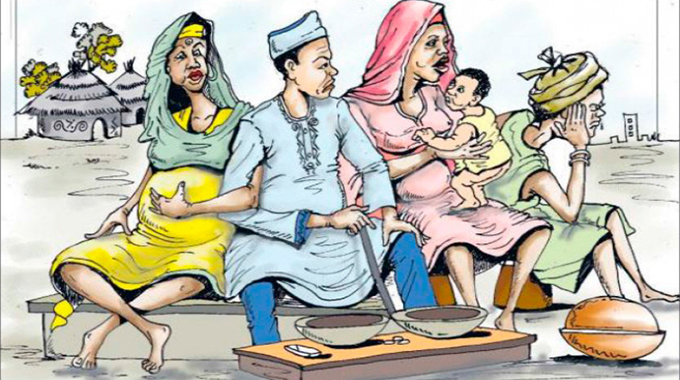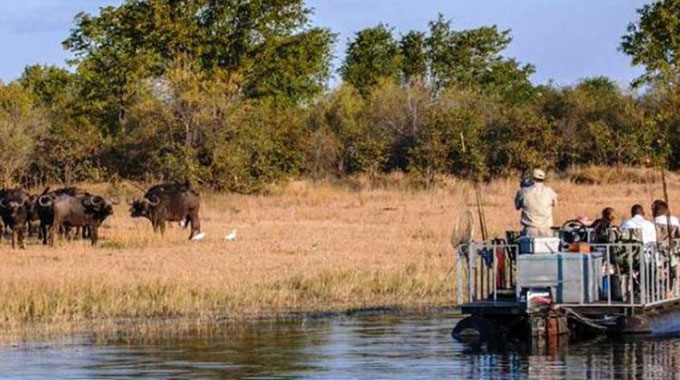The tale of Kariba Dam, Nyaminyami
Isdore Guvamombe Tourism Matrix
One day while the construction of Kariba Dam was at its peak between 1956-1959, heavy rains, typical of the biblical Noah’s times pounced and the coffer dam was destroyed resulting in many workers being swept away.
Among the workers were 11 Italians whose bodies were thrown against the wet dam wall concrete. The chief engineer was in a fix, either to pluck out the bodies or plaster them on the wall for eternity. He made a very bold, practical, technical and strategic decision to leave the bodies plastered on the wall.
Today, the bodies remain part of the Kariba Dam Wall. A church, St Babra Chapel was constructed in their memory. If you were the chief engineer would you have made this decision?
The name Kariba is thought to be a corruption of the Shona word for a small trap – Kariva. It is believed that when those who wished to construct the dam wall wanted to explain the nature of the project to the local BaTonga people, they emphasised that they wanted to build a small water trap – Kariva. However, the complex pronunciation of the “v” in Kariva saw the Italian constructors produce a sound much like a “b” hence the creation of the word Kariba. The local BaTonga people believed the Zambezi River upon which the trap would be constructed, was superintended over by a fierce river god, Nyaminyami and they seemed sure the river autochthon would not approve of the dam construction work and that he would one day strike back and destroy the project.
The BaTonga people lived in the Zambezi Valley for centuries in peaceful seclusion and with little contact with the outside world.
They were simple folk who built their houses in kraals along the banks of the great river and believed that their god, Nyaminyami, looked after them, supplying them with water and fish and food. But their idealistic lifestyle was to be blown apart. In the early 1940s, a report was made about the possibility of a hydro-electric scheme to supply power for the growing industry that colonialism had brought to Northern and Southern Rhodesia (now Zambia and Zimbabwe.)
In 1956, construction on the Kariba Dam project was started.
Heavy earth-moving equipment roared into the valley and tore out thousands of hundred-year-old trees to build roads and settlements to house the workers who poured into the area to build a dam that would harness the powerful river. The BaTonga’s peace and solitude was shattered and they were told to leave their homes and move away from the river to avoid the flood that the dam would cause. Reluctantly, they allowed themselves to be resettled higher up the bank, but they believed Nyaminyami would never allow the dam to be built and that eventually, when the project failed, they would move back to their homes.
In 1957, when the dam was well on its way to completion, Nyaminyami struck. The worst floods ever known on the Zambezi washed away much of the partly built dam and the heavy equipment, killing many of the workers.
Some of those killed were white men whose bodies disappeared mysteriously, and after an extensive search failed to find them, BaTonga elders were asked to assist as their tribesmen knew the river better than anyone.
The elders explained Nyaminyami had caused the disaster and in order to appease his wrath a sacrifice should be made. Initially, they were not taken seriously, but, in desperation, when relatives of the missing workers were due to arrive from Italy to claim the bodies of their loved ones, the search party agreed in the hope that the tribesmen would know where the bodies were likely to have been washed to. A black calf was slaughtered and floated on the river. The next morning the calf was gone and the workers’ bodies were in its place.
The disappearance of the calf holds no mystery in the crocodile-infested river, but the reappearance of the workers’ bodies three days after they had disappeared has never been satisfactorily explained. After the disaster, flow patterns of the river were studied to ascertain whether there was a likelihood of another flood and it was agreed a flood of comparable intensity would only occur once every thousand years.
The very next rainy season, however, brought further floods even worse than the previous year.
Nyaminyami had struck again, destroying the coffer dam, the access bridge and part of the main wall. In the process, 11 Italians were swept away and their bodies plastered on the dam wall. The chief engineer calculated and realised it was more structurally sound to leave the bodies plastered there than remove them. Today, their bodies are part of the dam wall.
The project survived and the great river was eventually controlled. In 1960, the generators were switched on and have been supplying electricity to Zimbabwe and Zambia ever since. As you sit in your home watching TV or listening to the radio and switching on electric gadgetry, it might be important for you to spare a thought for the men who died for Lake Kariba, our source of electricity.
The BaTonga people still live on the shores of Lake Kariba, and many still believe one day Nyaminyami will fulfil his promise and they will be able to return to their homes on the banks of the river. They believe Nyaminyami and his wife were separated by the wall across the river, and the frequent earth tremors felt in the area since the wall was built are caused by the spirit trying to reach his wife, and one day he will destroy the dam. The Nyaminyami, the Zambezi river god or Zambezi snake spirit, is one of the most important gods of BaTonga people.
Nyaminyami is believed to protect the BaTonga people and give them sustenance in difficult times. The river god is usually portrayed as male. Variously described as having the body of a snake and the head of a fish, a whirlpool or a river dragon, the Nyaminyami is seen as the god of Zambezi Valley and the river before the creation of the Kariba Dam. It is regularly depicted as a snake-like being or dragon-like creature with a snake’s torso and the head of a fish. It can be found as pendants on jewellery, usually carved out of wood, stone or bone, occasionally ivory, silver or gold both as a fashion accessory and as a good luck charm similar to the wearing of a St Christopher medallion.
Elaborate traditionally carved walking sticks depicting the Nyaminyami and its relationship with the valley’s inhabitants were popular with tourists visiting Zambia and have historically been gifts to prestigious visitors.
It is the traditional role of tribal elders and spirit mediums to intercede on behalf the inhabitants of the river valley when Nyaminyami is angered.
After the lake was completed the BaTonga believe that Nyaminyami withdrew from the world of men.
- Feedback: [email protected]








Comments